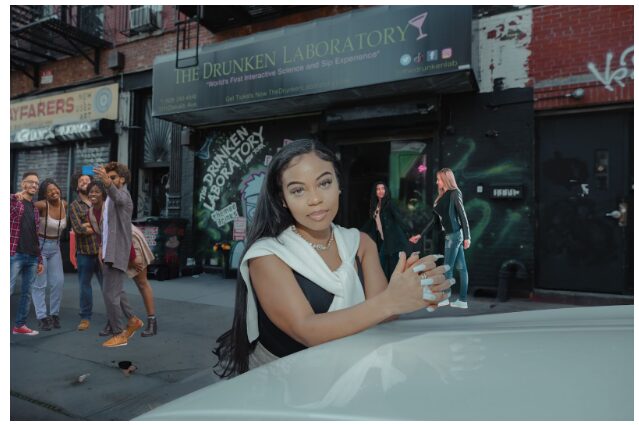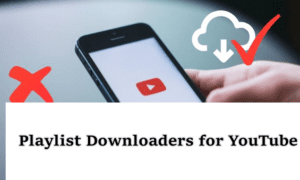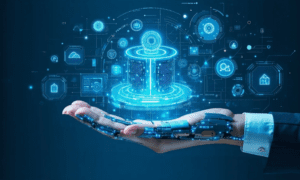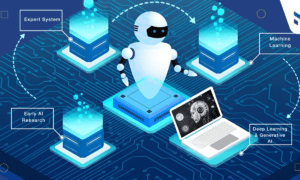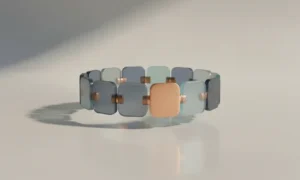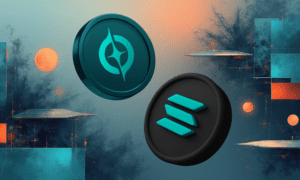Introduction
How can science meet the party scene? Cautney Tatiana Nelson, a biochemist, has turned her love for STEM into an experience no one saw coming. As the CEO of The Drunken Laboratory and founder of Science and Sip®, Cautney reimagined the science classroom. Her events are buzzing nights filled with bubbling beakers, quiz games, wild karaoke, and glowing drinks.
This was born out of a desire to make science fun and accessible; her work has drawn in over 10,000 guests, and that number keeps climbing. Her lab is about themed experiments, spontaneous dance-offs, and sound, color, and excitement. Cautney dreams of making science something people feel, not fear. Hence, she’s building a world where science is loud, proud, and packed with fun.
Q1. Cautney, the concept of turning science into a nightlife experience is both bold and unconventional. What was the earliest moment you realized that scientific curiosity could thrive in a social, even party-centered, environment?
Cautney Nelson: The breakthrough moment came during my university years when I observed how naturally people gravitated toward hands-on demonstrations at science fairs, but only when the atmosphere was relaxed and social. I realized that the traditional sterile laboratory environment was actually a barrier to genuine scientific engagement. People learn best when they’re comfortable, curious, and connected to others.
The pivotal insight was understanding that science isn’t just about facts and formulas – it’s about wonder, discovery, and shared human experience. When you combine that natural curiosity with social interaction, music, and yes, even cocktails, you create an environment where people don’t just observe science – they live it. This realization led me to question why we’ve traditionally segregated learning from entertainment when they can be powerfully synergistic.
“Innovation happens when you stop accepting ‘that’s how it’s always been done’ as a valid answer. The biggest breakthroughs come from questioning the fundamental assumptions everyone else takes for granted.”
CEO Insight: Every successful entrepreneur must learn to see barriers as opportunities for innovation. When everyone tells you something can’t be done, you’re often standing at the threshold of your biggest opportunity. The key is having the courage to challenge established norms and the persistence to prove your vision right.
Q2. Traditional nightlife often focuses on escapism. Your work invites guests to engage, learn, and create. How do you design each experience to balance entertainment with meaningful intellectual stimulation?
Cautney Nelson: Our design philosophy centers on what I call “experiential learning through joy.” We’ve developed a three-tier engagement model: attraction, interaction, and transformation. First, we attract through familiar social elements – music, drinks, and energy. Then we seamlessly transition into hands-on scientific experiences that are genuinely interactive, not just observational.
The key is making complex concepts accessible through tangible, immediate results. When participants create color-changing cocktails or witness chemical reactions that produce light, they’re not just having fun – they’re experiencing fundamental scientific principles. We’ve found that when people are relaxed and social, they’re more willing to ask questions, take risks, and engage with concepts they might otherwise find intimidating.
Our content development team includes both scientists and entertainment professionals who collaborate to ensure every activity delivers genuine educational value while maintaining high entertainment standards. We measure success not just by how much fun people have, but by how many leave with new understanding and genuine curiosity.
“True innovation isn’t about choosing between substance and style – it’s about creating experiences so compelling that people don’t realize they’re learning until they’ve already been transformed.”
CEO Insight: The best business models don’t force customers to choose between what they want and what they need. They create experiences that deliver both simultaneously. This requires a deep understanding of your audience’s motivations and the creativity to merge different value propositions into a seamless offering.
Q3. Many science-based programs struggle to attract diverse audiences, especially adults. What strategies have helped you break through cultural and psychological barriers to make science feel inclusive and exciting for everyone?
Cautney Nelson: The fundamental barrier we identified was the cultural perception that science is exclusively for “smart people” or academics. We’ve systematically dismantled this by creating an environment where curiosity, not expertise, is the entry point. Our facilitators are trained to celebrate questions, not just answers, and to make every participant feel like a legitimate scientist regardless of their background.
We’ve also recognized that representation matters enormously. Our team reflects the diversity of our community, and we’ve deliberately moved away from the stereotypical “lab coat” imagery toward something more approachable and inclusive. We use everyday language, relate scientific concepts to familiar experiences, and ensure that every cultural background sees itself reflected in our examples and applications.
Perhaps most importantly, we’ve positioned science as a social activity rather than an individual pursuit. When people come with friends, when they’re laughing and collaborating, the psychological barriers naturally dissolve. We’ve found that peer learning and group discovery create a supportive environment where everyone feels empowered to participate.
“Inclusion isn’t about lowering standards – it’s about raising access. When you create environments where everyone can contribute their unique perspective, innovation flourishes.”
CEO Insight: Building inclusive businesses isn’t just morally right – it’s strategically smart. Diverse audiences bring diverse insights, expanding your market reach and driving innovation. The key is designing experiences that welcome different backgrounds while maintaining excellence. This requires intentional effort, not just good intentions.
Q4. The Drunken Laboratory combines hands-on chemistry with music, cocktails, and energy. What behind-the-scenes processes ensure that the science remains authentic while also staying safe, scalable, and engaging?
Cautney Nelson: Safety and authenticity are non-negotiable foundations of our operation. We maintain rigorous safety protocols developed in partnership with professional chemists and safety consultants. Every experiment undergoes extensive testing, risk assessment, and refinement before reaching our guests. Our staff receives comprehensive training in both scientific principles and safety procedures.
For scalability, we’ve developed modular experience frameworks that can be adapted to different venues and group sizes while maintaining consistent quality. We use proven scientific principles but adapt the delivery method to ensure reproducibility and safety at scale. Our proprietary training systems ensure that facilitators worldwide can deliver authentic scientific experiences regardless of their individual scientific background.
The authenticity comes from our commitment to real science, not just science-themed entertainment. Every activity is grounded in legitimate scientific principles, explained in accessible terms, and designed to produce genuine learning outcomes. We regularly consult with academic partners to ensure our content remains scientifically accurate and current.
CEO Insight: Scalability without compromising quality is every entrepreneur’s challenge. The solution lies in creating robust systems and processes that ensure consistency while allowing for local adaptation. Never sacrifice your core values for growth – instead, build those values into every system you create.
Q5. You are building more than a venue, you are building a movement. How do you see this model influencing the future of science education, nightlife, or even urban culture on a broader scale?
Cautney Nelson: We’re pioneering what I call “experiential education” – a fundamental shift from passive consumption to active participation in learning. This model has implications far beyond nightlife. We’re already seeing interest from universities, corporations, and cultural institutions who recognize that engagement, not just information delivery, is the key to effective education.
In terms of urban culture, we’re contributing to the broader trend of “third spaces” – environments that blend work, learning, and socializing. Cities are increasingly recognizing that vibrant cultural districts need diverse offerings that engage both residents and visitors in meaningful ways. Our model demonstrates that entertainment venues can be intellectually stimulating while remaining commercially viable.
Looking at the broader implications, we’re helping to democratize science education and make it more accessible to adult learners who might never otherwise engage with scientific concepts. This has profound implications for scientific literacy, public understanding of technology, and community engagement with innovation.
Q6. Looking ahead, what new dimensions of science and social connection are you eager to explore, and how do you envision expanding this revolution beyond nightlife and into global impact?
Cautney Nelson: The future I envision extends far beyond entertainment into what I call “social learning ecosystems.” We’re developing partnerships with educational institutions to create hybrid learning experiences that combine formal education with social engagement. Imagine corporate team-building events that actually build scientific literacy, or community programs that use social chemistry to address local challenges.
Globally, we’re exploring how this model can be adapted to different cultural contexts while maintaining its core principles. Science is universal, but social connection is deeply cultural. We’re working with international partners to develop culturally relevant programming that maintains scientific authenticity while respecting local customs and preferences.
The ultimate vision is creating a global network of spaces where scientific curiosity is cultivated through social connection. This could revolutionize how we approach science communication, adult education, and community building. We’re not just changing how people experience science – we’re changing how people experience learning itself.
Our expansion strategy includes corporate partnerships, educational collaborations, and franchise opportunities that will allow us to scale this impact globally while maintaining our commitment to authentic scientific education and meaningful social connection.
“The future belongs to those who can see possibilities where others see problems, and who have the courage to build bridges between worlds that have never been connected before.”
CEO Insight: True visionaries don’t just scale their current business – they reimagine entire industries. The most successful entrepreneurs think systematically about how their innovation can create ripple effects across multiple sectors. Your business model today is just the foundation for the ecosystem you’ll build tomorrow.
Conclusion
Cautney Tatiana Nelson made science feel fun. With The Drunken Laboratory, she opened the world of STEM and poured in music, color, and celebration. She proves that learning doesn’t have to be quiet or serious to be real. It can happen over a drink. It can happen through a game. And it can absolutely happen on a Friday night. From Brooklyn to Miami, she’s showing cities how to mix education with excitement.
Cautney shows that science is for everyone. For karaoke champs, trivia lovers, and individuals looking for fun, there’s space in Cautney’s lab. Through her work with Science and Sip® and her nonprofit MillennialScnce, she’s inspiring a new kind of scientist.
Read More From Techbullion

